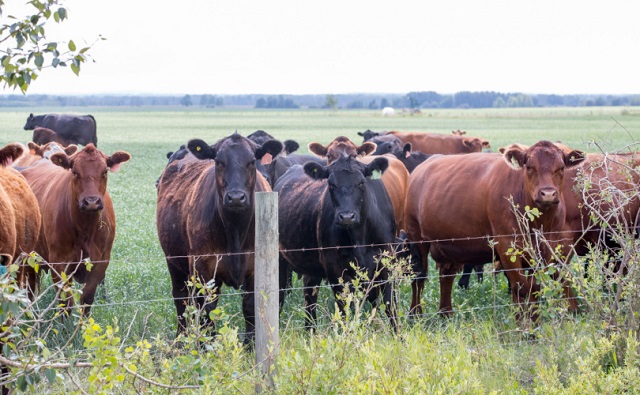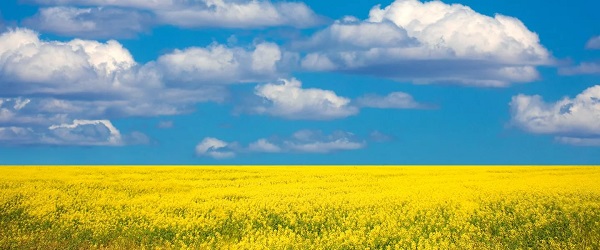Agriculture
Their Strategy in the War on Food

From the Brownstone Institute
By
In my previous two articles, we covered the global war on farmers and the culprits behind this agenda. Today, we will dive into the tactics these organizations use to foist their dystopian vision on the rest of us.
Perhaps you remember Event 201, the pandemic simulation run in late 2019 that served as a dress rehearsal for the 2020 Covid response. Such simulations have been used in the War on Food as well. Take, for example, the Food Chain Reaction Game, a 2015 wargame that simulated the time period from 2020 to 2030. Cargill and the other participants have removed the Food Chain Reaction Game data from their websites, but Cargill’s version was archived by independent researchers, so you can still see it here.
In the simulation, the decade brought “two major food crises, with prices approaching 400 percent of the long term average; a raft of climate-related extreme weather events; governments toppling in Pakistan and Ukraine; and famine and refugee crises in Bangladesh, Myanmar, Chad and Sudan.” When the game ended, its organizers had imposed meat taxes in Europe, capped CO2 emissions, and instituted a global carbon tax. The time period of the Food Chain Reaction Game handily coincides with the 2020 Covid crisis and ends with the culmination of Agenda 2030. If you don’t think those dates are significant, you aren’t paying attention.
The parties behind this simulation include the World Wildlife Fund, the Center for American Progress, the Center for Naval Analyses, and Cargill. Note the participation of US military and intelligence-linked organizations in this simulation, much as they appeared throughout the Covid power grab. Cargill, as I mentioned before, is one of the most powerful members of the global Big Ag cartel and have excelled in crushing independent farmers globally to establish total control of the food supply. The Center For American Progress is a Soros and Podesta-affiliated think tank.
The World Wildlife Fund has a shady Malthusian history dating to its eugenicist founders like Prince Bernhard of the Netherlands, co-founder of the Bilderberg Group; transhumanist Julian Huxley (brother of Brave New World author Aldous Huxley); and Britain’s Prince Philip, who said he wanted to be reincarnated “as a deadly virus, to contribute something to solving overpopulation.”
Note that the measures these conspirators concocted – meat taxes and a global carbon tax – have nothing to do with increasing the food supply to end famine – much as Event 201’s participants obsessed about vaccines and controlling misinformation rather than providing effective early treatment for disease. To state the obvious, neither simulation is really about solving hunger or viral contagion. They are designed to game out how to ram an agenda down the throats of an unwilling populace.
Both exercises are classic examples of Hegelian Dialectic, the problem-reaction-solution strategy whereby a problem is created or used to stimulate public demand for a solution. The solution always involves pre-planned actions or legislation that never would have passed public approval before the problem was created. To quote Rahm Emanuel, President Obama’s Chief of Staff, “Never let a serious crisis go to waste. By that I mean, it’s an opportunity to do things you think you could not do before.”
The goal of the Food Chain Reaction Game simulation and the global elites who share this vision is simple but devastating: the controlled demolition of the current food supply and supply chain network – not to end factory farming and replace it with regenerative, earth healing agriculture – but to replace it with a global, centralized, fully surveilled, and tightly controlled food system based on lab-created and industrially processed so-called foods, with little dietary choice and abysmal health outcomes for all but the elites, using climate change as the excuse for it all.
As Bertrand Russell predicted, diet will not be left to individuals, but will be such as the best biochemists recommend.
If you’re new to this topic, you may feel that statement is hyperbolic. It is hard to grasp that there are people planning something this far-reaching and diabolical – it’s as far-fetched as a network of global elites using a lab-escaped virus as an excuse to destroy the economies of the world and forcibly inject billions with experimental poisons. But it is reality, and as the quotes from Bertrand Russell and Monsanto’s CEO hint, this agenda has been in the works for decades.
In my next article, we will look at some of the publicly acknowledged projects that are in the pipeline for achieving this goal.
Agriculture
Canada’s air quality among the best in the world

From the Fraser Institute
By Annika Segelhorst and Elmira Aliakbari
Canadians care about the environment and breathing clean air. In 2023, the share of Canadians concerned about the state of outdoor air quality was 7 in 10, according to survey results from Abacus Data. Yet Canada outperforms most comparable high-income countries on air quality, suggesting a gap between public perception and empirical reality. Overall, Canada ranks 8th for air quality among 31 high-income countries, according to our recent study published by the Fraser Institute.
A key determinant of air quality is the presence of tiny solid particles and liquid droplets floating in the air, known as particulates. The smallest of these particles, known as fine particulate matter, are especially hazardous, as they can penetrate deep into a person’s lungs, enter the blood stream and harm our health.
Exposure to fine particulate matter stems from both natural and human sources. Natural events such as wildfires, dust storms and volcanic eruptions can release particles into the air that can travel thousands of kilometres. Other sources of particulate pollution originate from human activities such as the combustion of fossil fuels in automobiles and during industrial processes.
The World Health Organization (WHO) and the Canadian Council of Ministers of the Environment (CCME) publish air quality guidelines related to health, which we used to measure and rank 31 high-income countries on air quality.
Using data from 2022 (the latest year of consistently available data), our study assessed air quality based on three measures related to particulate pollution: (1) average exposure, (2) share of the population at risk, and (3) estimated health impacts.
The first measure, average exposure, reflects the average level of outdoor particle pollution people are exposed to over a year. Among 31 high-income countries, Canadians had the 5th-lowest average exposure to particulate pollution.
Next, the study considered the proportion of each country’s population that experienced an annual average level of fine particle pollution greater than the WHO’s air quality guideline. Only 2 per cent of Canadians were exposed to fine particle pollution levels exceeding the WHO guideline for annual exposure, ranking 9th of 31 countries. In other words, 98 per cent of Canadians were not exposed to fine particulate pollution levels exceeding health guidelines.
Finally, the study reviewed estimates of illness and mortality associated with fine particle pollution in each country. Canada had the fifth-lowest estimated death and illness burden due to fine particle pollution.
Taken together, the results show that Canada stands out as a global leader on clean air, ranking 8th overall for air quality among high-income countries.
Canada’s record underscores both the progress made in achieving cleaner air and the quality of life our clean air supports.
Agriculture
Health Canada indefinitely pauses plan to sell unlabeled cloned meat after massive public backlash

From LifeSiteNews
Health Canada has indefinitely paused its plan to allow unlabeled cloned meat in grocery stores after thousands of Canadians, prominent figures, and industry leaders condemned the move.
Health Canada is pausing its plan to put unlabeled cloned meat in Canadian grocery stores, following public outcry.
In a November 19 update on its website, Health Canada announced an indefinite suspension of the decision to remove labels from cloned meat products after thousands of Canadians condemned the plan online.
“The Government of Canada has received significant input from both consumers and industry about the implications of this potential policy update,” the publication read. “The Department has therefore indefinitely paused the policy update to provide time for further discussions and consideration,” it continued, adding, “Until the policy is updated, foods made from cloned cattle and swine will remain subject to the novel food assessment.”
In late October, Health Canada quietly approved removing labels from foods derived from somatic cell nuclear transfer (SCNT) clones and their offspring. As a result, Canadians buying meat from the grocery store would have had no way of knowing if the product was cloned meat.
Many researchers have documented high rates of cloning failure, large offspring syndrome (LOS), placental abnormalities, early death, and organ defects in cloned animals. The animals are also administered heavy doses of antibiotics due to infections and immune issues.
Typically, the offspring of cloned animals, rather than the cloned animals themselves, are processed for human consumption. As a result, researchers allege that the health defects and high drug use does not affect the final product.
However, there are no comprehensive human studies on the effects of eating cloned meat, meaning that the side-effects for humans are unknown.
News of the plan spread quickly on social media, with thousands of Canadians condemning the plan and promising to switch to local meat providers.
“By authorizing the sale of meat from cloned animals without mandatory labeling or a formal public announcement, Health Canada risks repeating a familiar and costly failure in risk communication. Deeply disappointing,” food policy expert and professor at Dalhousie University Sylvain Charlebois wrote on X.
"By authorizing the sale of meat from cloned animals without mandatory labeling or a formal public announcement, Health Canada risks repeating a familiar and costly failure in risk communication. Deeply disappointing."
More on this week's Food Professor Podcast! https://t.co/UZTIcQzUN3
— The Food Professor (@FoodProfessor) October 30, 2025
Likewise, Conservative MP Leslyn Lewis warned, “Health Canada recently decided that meat from cloned animals and their offspring no longer needs a special review or any form of disclosure.”
“That means, soon you could buy beef or pork and have no idea how it was bred,” she continued. “Other countries debate this openly: the EU has considered strict labelling, and even the U.S. has admitted that cloned-offspring meat is circulating.”
“But here in Canada, the public wasn’t even told. This is about informed choice,” Lewis declared. “If government and industry don’t have to tell us when meat comes from cloned animals, then Canadians need to ask a simple, honest question: What else are we not being told?”
Health Canada recently decided that meat from cloned animals and their offspring no longer needs a special review or any form of disclosure. That means, soon you could buy beef or pork and have no idea how it was bred.
Other countries debate this openly: the EU has considered… pic.twitter.com/zCnqJOpvf3
— Dr. Leslyn Lewis (@LeslynLewis) November 14, 2025
Likewise, duBreton, a leading North American supplier of organic pork based out of Quebec, denounced the move, saying, “Canadians expect clarity, transparency, and meaningful consultation on issues that directly touch their food supply. As producers, we consider it our responsibility and believe our governing food authorities should too.”
According to a survey conducted by duBreton, 74 percent of Canadians believe that “cloned meat and genetic editing practices have no place in farm and food systems.”
-

 Business2 days ago
Business2 days agoWhy Does Canada “Lead” the World in Funding Racist Indoctrination?
-

 Media2 days ago
Media2 days agoThey know they are lying, we know they are lying and they know we know but the lies continue
-

 Focal Points2 days ago
Focal Points2 days agoThe West Needs Bogeymen (Especially Russia)
-

 Censorship Industrial Complex2 days ago
Censorship Industrial Complex2 days agoUS Condemns EU Censorship Pressure, Defends X
-

 Dan McTeague2 days ago
Dan McTeague2 days agoWill this deal actually build a pipeline in Canada?
-

 Banks2 days ago
Banks2 days agoTo increase competition in Canadian banking, mandate and mindset of bank regulators must change
-

 Business2 days ago
Business2 days agoLoblaws Owes Canadians Up to $500 Million in “Secret” Bread Cash
-

 Opinion1 day ago
Opinion1 day agoThe day the ‘King of rock ‘n’ roll saved the Arizona memorial












